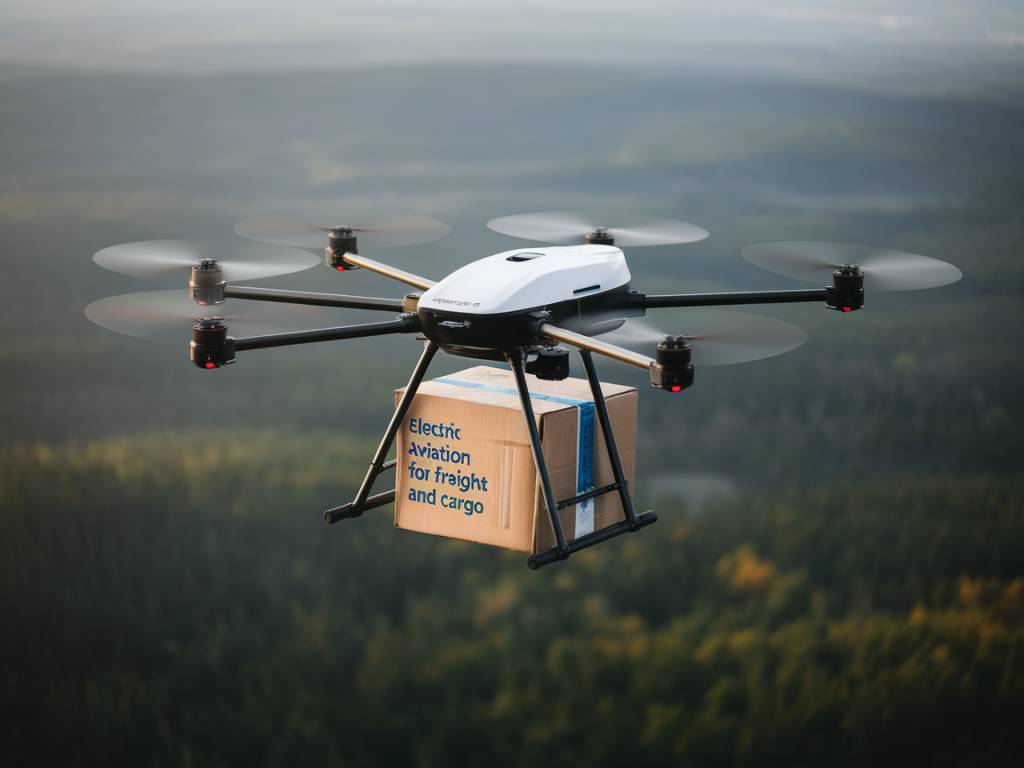The landscape of aviation is undergoing a significant transformation, with electric aviation taking center stage. While electric planes for passenger travel seem to dominate headlines, an equally innovative shift is occurring in the realm of freight and cargo transport. As industries push towards sustainability, electric aviation is poised to revolutionize the logistics and transportation sectors. This article delves into the key aspects of electric aviation for freight and cargo, examining its benefits, challenges, and future prospects.
Understanding Electric Aviation
Electric aviation refers to the use of electrically powered aircraft. These aircraft utilize electric motors rather than conventional internal combustion engines. The power source for electric planes generally comes from batteries or hydrogen fuel cells. While battery technology is advanced, it is still evolving to support larger and longer-haul cargo aircraft. Hydrogen fuel cells offer an alternative, producing electricity from hydrogen gas through a chemical reaction, with water as the only emission, making it an environmentally friendly solution.
The Benefits of Electric Aviation for Cargo
Environmental Impact
One of the foremost advantages of electric aviation for freight and cargo is its potential to reduce the carbon footprint. Traditional aviation is a significant contributor to greenhouse gas emissions, primarily due to jet fuel consumption. Electrically powered aircraft produce zero emissions during flight, making them a more sustainable option for the logistics industry.
Cost Efficiency
Electric aircraft can offer cost savings in several areas. The cost of electricity is generally lower than that of jet fuel, and electric motors have fewer moving parts than internal combustion engines, resulting in lower maintenance costs. Additionally, electric planes could benefit from advancements in renewable energy sources, further reducing operational expenses.
Noise Reduction
Electric aircraft are generally quieter than their conventional counterparts. This can lead to a reduction in noise pollution, which is a significant concern in urban areas and near airports. Quieter operations could also allow for more flexible scheduling of flights, as noise restrictions often limit night-time and early-morning operations.
Operational Efficiency
Electric propulsion systems are known for their efficiency and reliability. They can offer better performance and quicker turnaround times, enhancing overall operational efficiency. This is particularly beneficial in the freight and cargo sector, where time-sensitive deliveries are crucial.
Challenges and Obstacles
Battery Limitations
Despite significant advancements, battery technology remains a limiting factor for electric aviation. The weight and energy density of current batteries are not yet sufficient to support long-haul cargo flights. Most existing electric aircraft are suitable for short to medium distances, which may limit their application in the freight industry, where long-distance international shipping is common.
Infrastructure Requirements
The implementation of electric aviation requires substantial changes to existing airport and logistics infrastructure. Charging stations, maintenance facilities, and specialized training for ground and maintenance crews are necessary to support electric cargo planes. This represents a significant initial investment and planning challenge.
Limited Payload Capacity
Current electric aircraft typically have a lower payload capacity compared to conventional cargo planes, which limits the volume and weight of goods they can transport. This constraint necessitates more frequent flights or larger fleets to handle the same amount of cargo, impacting the overall economy and efficiency of operations.
Regulatory and Certification Hurdles
The aviation industry is heavily regulated, and introducing new technology requires rigorous certification processes to ensure safety and reliability. Electric aircraft must meet stringent regulatory standards before they can be commercially used for freight and cargo. This process can be time-consuming and costly, potentially delaying widespread adoption.
Future Prospects for Electric Aviation in Freight
Technological Advances
Continuous improvements in battery technology, including higher energy densities and faster charging times, are likely to extend the range and capacity of electric cargo planes. Research into alternative power sources, such as hydrogen fuel cells and hybrid-electric systems, is also progressing and holds promise for overcoming current limitations.
Industry Adoption
Major logistics and transportation companies are beginning to explore and invest in electric aviation. Partnerships with aviation manufacturers, government incentives, and sustainable business practices are driving the shift toward electric cargo planes. As industry leaders adopt these technologies, the transition will accelerate, paving the way for broader acceptance and implementation.
Policy Support
Government policies and international agreements focused on reducing carbon emissions and promoting sustainable transportation solutions will play a pivotal role in advancing electric aviation. Subsidies, tax incentives, and supportive regulatory frameworks can expedite the development and deployment of electric freight aircraft.
Integration with Other Sustainable Practices
Electric aviation can be part of a larger strategy for achieving sustainability in logistics. Integrating electric cargo planes with other green transportation modes, such as electric trucks and autonomous delivery systems, can create a more comprehensive and efficient supply chain. This holistic approach can amplify environmental benefits and operational efficiencies.
Prominent Players in Electric Aviation for Cargo
Several companies are at the forefront of developing electric aircraft specifically for freight and cargo:
- Magnix: Known for its electric propulsion systems, Magnix is working on retrofitting existing aircraft to electric propulsion.
- Eviation Aircraft: Their « Alice » aircraft is designed for regional cargo transport, offering zero-emission flights with competitive operational costs.
- Airbus: Airbus is investing in various electric and hybrid-electric projects, aiming to incorporate electric propulsion into their future cargo aircraft portfolio.
- UPS Flight Forward: UPS is exploring electric and hybrid-electric aircraft to enhance its delivery services, focusing on sustainability and efficiency.
Conclusion
Electric aviation for freight and cargo presents a transformative opportunity for the logistics and transportation sectors, offering significant environmental and operational benefits. While challenges remain, ongoing technological advances, increased industry adoption, and supportive policies are paving the way for a more sustainable future in aviation. As electric cargo planes become more viable and widespread, they have the potential to reshape the logistics landscape, making it more efficient and eco-friendly.



